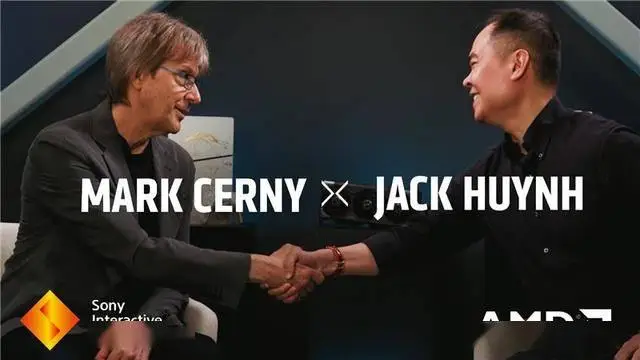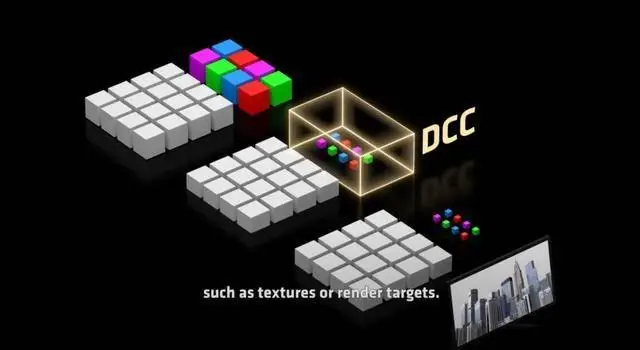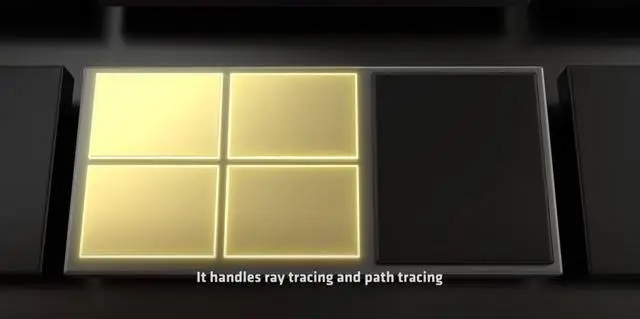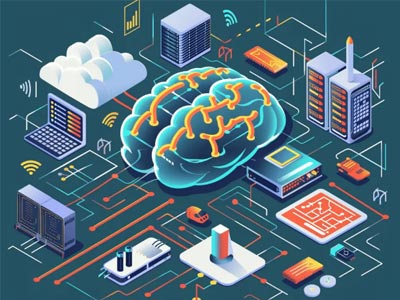Sony recently released an interview with Mark Cerny, Chief Architect of the PS4 and PS5, and Jack Huynh, General Manager of AMD's Computing and Graphics Division. Through their collaborative Project Amethyst initiative, they unveiled new technologies that will be used in future hardware, including the PS6.

This joint interview between Sony and AMD is incredibly informative, demonstrating that the PS6 will be a generational leap forward in hardware. Based on the statements made by Mark Cerny and Jack Huynh, we can speculate on the following improvements:
I. Integrated AI Engine: Neural Arrays
Core idea: Connecting all of the GPU's Compute Units in series to work together, allowing the graphics card to learn and compute like a dedicated AI chip.
Improvements:
- Significantly improved machine learning (FSR, PSSR, AI upscaling, and denoising) performance;
- More efficient image upscaling technology for clearer and smoother gaming;
- Enhanced GPU AI inference capabilities, enabling real-time intelligent rendering.
Simple Understanding: The GPU now has an "AI brain" dedicated to handling neural network tasks.
II. New Video Memory Management System: Universal Compression
Core Concept: Compresses not just textures, but all video memory data.
Improvements:
- Significantly frees up video memory bandwidth, resulting in equivalent performance improvements;
- More detailed game graphics and higher frame rates;
- Lower power consumption and quieter systems.
Simple Understanding: Smarter data transfer, eliminating bandwidth waste, allowing the same hardware to do more.
III. Dedicated Ray Tracing Hardware: Radiance Cores
Core Concept: Adds dedicated ray compute units within the GPU to independently handle ray traversal and path tracing.
Improvements:
- Explodes in Ray Tracing performance (more stable frame rates, more realistic reflections);
- The CPU is no longer slowed down by ray tracing, allowing it to be used for physics and AI simulations;
- The overall rendering pipeline is cleaner and more efficient.
To put it simply: Lighting, reflections, and shadows are all closer to "cinematic quality," with no more frame drops.
IV. Collaborative Optimization of Three Major Systems: Neural Arrays × Radiance Cores × Universal Compression
Synergy Implications:
- AI-assisted ray tracing (smart reflections, AI denoising) becomes the norm;
- The compression system alleviates bandwidth pressure, allowing both AI and ray tracing to run faster simultaneously;
- Improved overall energy efficiency, with improved performance and more manageable power consumption.
To put it simply: The three modules complement each other, like adding a "brain + heart + lungs" to the PS6, dramatically increasing efficiency when working together.
V. Potential Improvements (Speculations)
- Faster SSD and I/O System → Smoother scene transitions, no loading screens;
- Improved thermal and power management → Quieter and more energy-efficient;
- Cinematic Graphics Pipeline → Possibly integrating AI reconstruction, global illumination, and Path Tracing hybrid rendering;
- Enhanced Developer Tools → More open APIs and cross-platform support (AMD intentionally emphasizes "for the entire industry").
VI. Release Expectations
Current Status: All new technologies are still in the "simulation verification phase" and have not yet entered mass production.

In a nutshell:
PS6 = A smarter, more efficient, and more "AI-inspired" console. It's more than just a performance upgrade; it's a machine that "understands light and images."
Interview Details
Sony and AMD Jointly Launch New Neural Engine "Neural Arrays": Integrating All GPU Compute Units
Mark Cerny and Jack Huynh stated:
"Neural networks used in techniques like FSR and PSSR place an extremely heavy load on the GPU. They require both massive computational resources and high-speed access to large amounts of memory data. The GPU's architecture, however, hinders this – it consists of numerous Compute Units (CUs), and tasks are typically broken down into smaller pieces for each unit to handle independently. However, this approach has its drawbacks: over-fragmenting tasks can lead to efficiency losses, forcing us to abandon our original approach and explore alternative approaches."
"This challenge got us thinking. The result is a technology we call 'Neural Arrays.' The core concept is: instead of having Compute Units operating independently, they can share data, work together, and collaborate like a single, focused AI engine. Of course, we don't wire the entire GPU into one giant unit – that would be a complex cable management nightmare. Instead, we cleverly and efficiently integrate the Compute Units within each shader engine." Units are interconnected. This is a game-changer for neural rendering: it enables larger machine learning models, reduces overhead, improves efficiency, and enables greater scalability as load grows.
"Neural Arrays allow us to process large areas of the screen at once. The resulting efficiency gains will be a game-changer, revolutionizing the development of next-generation image upscaling and denoising techniques."
"With Neural Arrays, we've unlocked a whole new level of machine learning performance. This means improved FSR, more efficient ray regeneration, and a host of new AI features we're just beginning to envision—all running in real time on the GPU. And this is just the beginning. Looking ahead, you'll see even more innovative technologies designed for cinematic rendering, pushing the visual experience to a whole new level."
Mark Cerny hints at a new PS6 feature: Universal Compression.
Mark Cerny and Jack Huynh said:
"The thing is—whether it's machine learning (ML) or ray tracing, they both suffer from the same bottleneck. The memory bandwidth limitations of current GPUs hinder the seamless adoption of next-generation rendering technologies. These technologies require significantly higher bandwidth to process textures, Ray Tracing, and other rendering technologies at resolutions above 4K. Tracing denoised data, and smooth asset loading. And that's the backdrop for our final announcement. And yes, it's big news.
"On current GPUs, including the PlayStation 5 and PlayStation 5 Pro, we use a technology called DCC (Delta Color Compression). This is a strategy used to reduce memory bandwidth usage when the GPU reads or writes certain data, such as textures or render targets."
"The technology we're building for future GPUs and SoCs takes this data compression concept to a whole new level. We call it 'Universal Compression.' It evaluates every piece of data being written to memory, not just textures, and compresses it when possible. Only the necessary bytes are transferred, significantly reducing memory bandwidth usage. This means the GPU can deliver more detail, higher frame rates, and greater power efficiency."
"I'm very excited to see the improvements Universal Compression will bring, and how much it can improve the actual bandwidth performance of the GPU beyond its paper specifications. The benefits of this technology are numerous, including lower power consumption, higher fidelity game assets, and perhaps most importantly, its integration with Neural Arrays and Radiance Cores." These synergies will help us deliver the best gaming experiences for players. Of course, these technologies are still in very early stages and only exist in simulations right now, but the initial results are very exciting. I'm excited about bringing them to the next generation of consoles in the coming years."
"We feel the same way, Mark. We're very excited to bring these innovations to all game developers, because this isn't just about the chips themselves, it's about empowering the creators and communities who make games amazing. We're just getting started. As we continue to work with close partners like Sony, everything we do is focused on one goal: to push gaming forward. Gaming has always been at our core, and now more than ever. We're here for the players, the creators, and the communities that make this industry so vibrant. And everything we're building is for you."

Mark Cerny Hints at New PS6 Feature – Radiance Cores
Mark Cerny and Jack Huynh said:
"Now we're taking this a step further with Radiance Cores, a new, dedicated hardware module designed specifically for Unified Light Transport. It handles Ray Tracing and Path Detection in real-time." Tracing takes lighting performance to a whole new level. This technology, along with other modules, forms AMD's new rendering architecture.
Radiance Cores completely offload the 'ray traversal' calculations—one of the most computationally intensive parts of the rendering pipeline. By dedicating this logic to hardware, the CPU is freed up to focus on geometry and physics simulations, while the GPU can focus on what it does best: shading and lighting. The end result: a simpler, faster, and more efficient rendering pipeline, ready for a new generation of ray-traced games.

Putting traversal logic into dedicated hardware alone delivers significant performance gains, and running this hardware independently of the Shader Cores further improves performance. In addition to these performance gains, we're also developing additional features, such as more flexible and efficient data structures for ray-traced geometry.
"By hardwareizing ray traversal logic, we've achieved a significant performance leap; at the same time, by making this hardware independent of the Shader Cores, we've also achieved a significant performance leap." Cores have further accelerated operations. We're also working on other features, such as more flexible and efficient geometry data structures, to optimize Ray Tracing processing. Overall, I'm very excited to see developers get their hands on Radiance Cores as soon as possible. I'm also very excited to see how they use these new tools to push Ray Tracing and Path Tracing performance to new heights."




